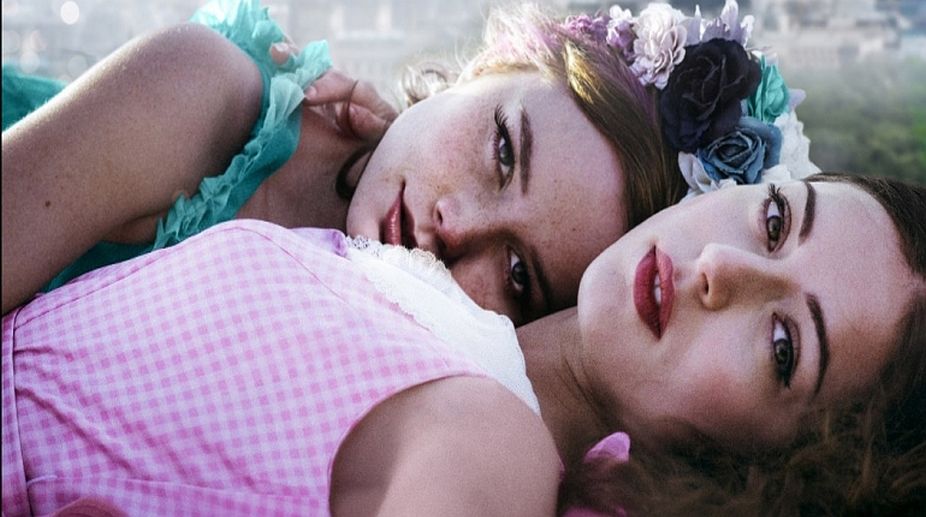Film industry mourns demise of Shyam Benegal
Veteran filmmaker Shyam Benegal passed away at the age of 90 in Mumbai on Monday. Members of the film fraternity shared their condolences on social media in light of the demise of the cinema legend.

A still from Young Sophie Bell (PHOTO: SNS)
When the International Forum of New Cinema was established more than 30 years ago, the film society had run into a lean patch. Cine Central had managed to survive independently on the strength of its own initiatives and support from film lovers. Many of their fellow organisations had been compelled to wind up because of rapid developments in technology that had made it easier to look for VHS cassettes and subsequently DVDs to be watched in the comfort of drawing rooms. It was difficult to convince them that the creative experience of watching films in a theatre had an excitement of its own. The debate that followed the screening would find distant echoes and remain in the mind if the film deserved attention.
The response of a thinking audience turned the Cine Central into a major event long before the Kolkata Film Festival had been conceived. It had entries from major festivals and drew visitors who had discovered that Kolkata had a long established tradition of cinematic consciousness that later extended to other cities. The festival was subsequently made to coincide with the more colourful event presented by the state government, which came to be recognised by FIAFP, the apex body of international film festivals.
Advertisement
However, it preserved an identity of its own and was aimed at a more serious audience. It now seems that the film society has chosen to revert to the practice of organising the festival as an independent offering four months after the Kolkata Film Festival. At a time when the film society movement deserves to be revived, this would seem to be a step in the right direction. Over the years, Cine Central has shown that it has the expertise and the connections required to have a festival of its own.
Advertisement
It has begun a new innings this year at the revamped Yuva Kendra where the Swami Vivekananda auditorium offers an excellent environment for lively exchanges after the screenings. This year there was a good enough selection of films from more than 20 countries — less than what is offered at major festivals but wide-ranging enough to claim serious attention.
One missed the participation of foreign guests but that is not something that one would expect from a festival of modest proportions. The opening ceremony brought two of Bengali cinema’s veterans — filmmaker Nripen Ganguly and actress Lily Chakraborty. The former has made just a few films that never really entered the mainstream. But his association with some of the best filmmakers has kept him involved even at the age of 90. The actress has had an acting career of more than 50 years both in what was then Bombay and Tollygunge but is best remembered for her films with Ajoy Kar, Asit Sen, Gulzar and, of course, Satyajit Ray. The lifetime award that the society conferred on her was well deserved on the sheer strength of the number of films she acted in from the days of Bhanu Goenda Jahar Assistant. As a supporting artiste in several hundred films, she displayed a competence that made directors comfortable.
The film festival, however, had a different attraction in the sense that the audience comes with keener interest in what is happening in the world of cinema. Festivals have thrown up new names and there is always a possibility of discovering directors as interesting as Jafar Panahi and Kim Ki-duk. The opening film was The Empty Hours from Mexico. It was about a young man who is entrusted with the task of looking after a motel and runs into an unusual romantic experience. It becomes quite natural in the environment that prevails. From Norway came The Man Who Loved Yngve about a young man whose life takes tragic turns after a chance encounter from which there is no escape. The French entry, Bird People, was an engaging comment on contemporary morality that has a telling impact on people’s lives. The film has a lighthearted tone that one has come to associate with French social dramas.
A similar kind of irreverence marks the Cuban film, Boccaccio in Havana. The interest also lies in the unconventional treatment where a number of characters from different stories are held together by the same writer. There were two comparatively unknown directors from Bangladesh in Nadijon and Krishnapaksha, which offered in interesting contrast in rural and urban backdrops but with a more realistic approach. It confirmed that one section of the Bangladesh cinema was moving outside the popular stream.
Young Sophie Bell from Sweden and Long Story Short from Denmark found new directors exploring the liberal climate that had a varied impact on young people. The films never rose to extraordinary heights but there was a sense of social investigation that made the experience quite purposeful. One also had reason to be pleased with entries like The Healing from Serbia, Future Lasts Forever from Turkey and More Than Just Enemies from Austria that offered glimpses of the new generation of filmmakers.
The first year of the festival’s revival missed some of the earlier sparks. But with an organisation that has just celebrated its golden jubilee and remains deeply committed to the cause of good cinema, there is reason to be hopeful about the future.
Advertisement